Indoor spaces need plants to look beautiful, peaceful and attractive. Using Hanging plants is a great way of adding a touch of nature to your indoor space. They can brighten up a room and make it feel more inviting. Plus, they’re easy to care for and don’t take up much space.
The best way to start learning about something is to dive in and get your hands dirty.
There are several Hanging plants and this is a guide that’ll direct you to choose the best.
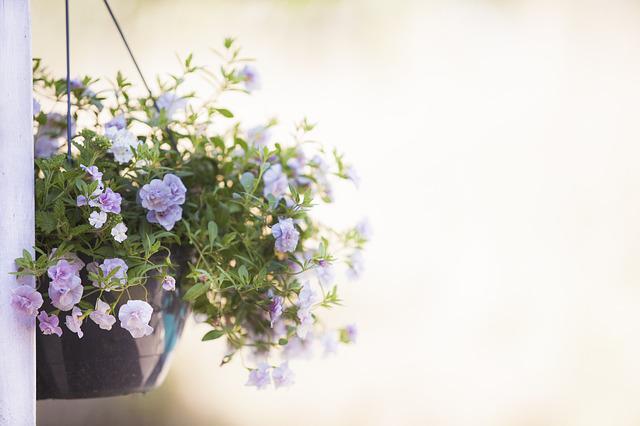
The History Of Hanging Plants
The history of hanging plants is long and interesting. Plants have been used for centuries to decorate homes and gardens, and many of them have been hung from ceilings or walls.
The first recorded use of hanging plants dates back to the ancient Egyptians, who used them to decorate their homes. Hanging plants were also popular in ancient Rome, where they were used to decorate public spaces and homes.
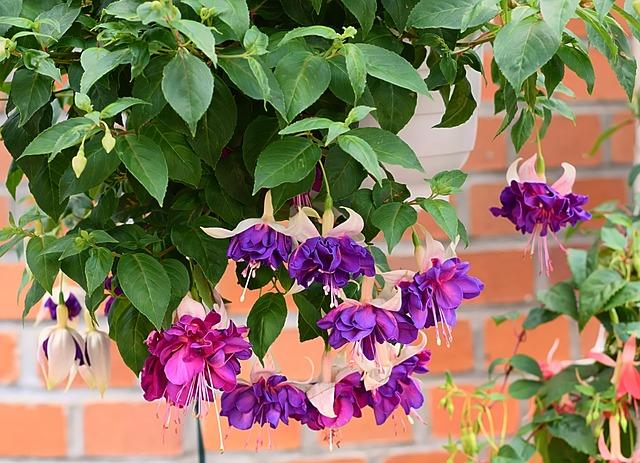
Hanging plants became less popular during the Middle Ages, but they experienced a resurgence in popularity during the Renaissance. During this time, hanging plants were often used to decorate churches and other public buildings.
Hanging plants fell out of fashion again during the Victorian era, but they have been making a comeback in recent years. Today, hanging plants are popular for both indoor and outdoor use. They add a touch of elegance to any home or garden and can be used to create a variety of different looks.
The Spiritual Significance Of Hanging Plants
Hanging plants have been used for centuries in many cultures for their spiritual and magical properties. In some cultures, it is believed that hanging plants can absorb negative energy and cleanse a space. They are also thought to bring good luck and fortune.
There are many different ways to use hanging plants for spiritual purposes. For example, you can place a plant in your home to ward off evil spirits. You can also use them in rituals and ceremonies to bring good luck or to ask for favors from the spirit world.
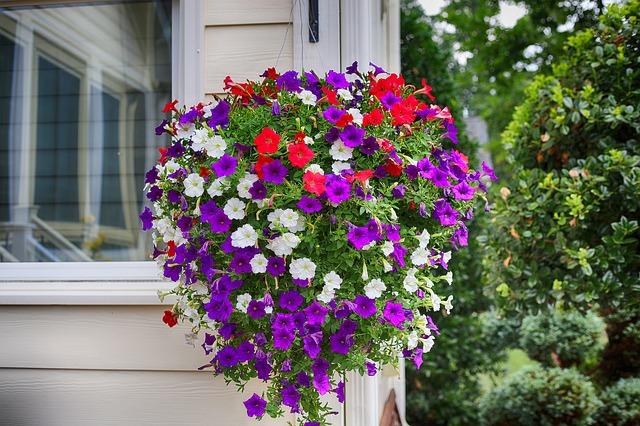
If you are interested in using hanging plants for spiritual purposes, it is important to choose the right plant. Some of the most popular plants for spiritual purposes include:
Bamboo
Bamboo is a popular plant for spiritual purposes because it is believed to absorb negative energy. It is also thought to bring good luck and fortune.
Ivy
Ivy is a plant used for spiritual purposes because it is believed to have cleansing properties. It is also thought to bring good luck and fortune.
Fern
Ferns are frequently used for spiritual purposes because they are believed to have protective properties. They are also thought to bring good luck and fortune.
Palm
Palms are used for spiritual purposes because they are believed to bring good luck and fortune.
Lotus
Lotus plants are quite common for spiritual purposes because they are believed to have purifying properties. They are also thought to bring good luck and fortune.
The Benefits Of Hanging Plants
Hanging plants are a great way to add greenery to your home without taking up too much space. They can brighten up a room and make it feel more inviting. Additionally, hanging plants can help purify the air and improve your indoor air quality.
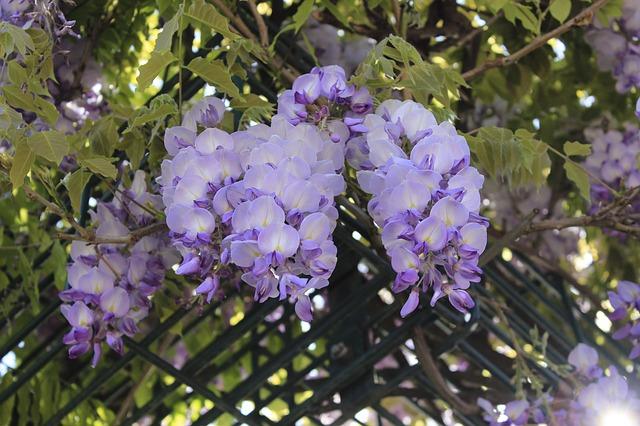
There are many benefits to hanging plants, but here are five of the best benefits:
- Brighten Up a Room
- Act as Air Purifiers
- Low Maintenance Plants
- Versatile
- Affordable
Hanging plants are a great way to add a splash of color and life to a room. They can brighten up an otherwise dull space and make it feel more inviting. If you’re looking for a way to add some life to your home, hanging plants are a great option.
They can help purify the air in your home. Hanging plants removes harmful toxins and pollutants from the air, which can improve your indoor air quality. Additionally, plants release oxygen, which can help you breathe easier. If you’re looking for a way to improve your indoor air quality, hanging plants are a great option.
Hanging plants are relatively low maintenance. They don’t require a lot of care or attention, which makes them a great option for busy people or people with limited space. Hanging plants are a great option for people who don’t have a lot of experience with plants. If you’re looking for a low-maintenance plant, hanging plants are a great option.
Hanging plants are versatile and can be used in a variety of ways. They can be hung from the ceiling, from a window, or from a stand. Likewise, they come in a variety of sizes, shapes, and colors. So, whether you’re looking for a small plant or a large one, there’s a hanging plant that’s perfect for you.
Hanging plants are relatively affordable, which makes them a great option for people on a budget. They’re a great way to add greenery to your home without breaking the bank. If you’re looking for a way to add plants to your home without spending a lot of money, hanging plants is a great option.
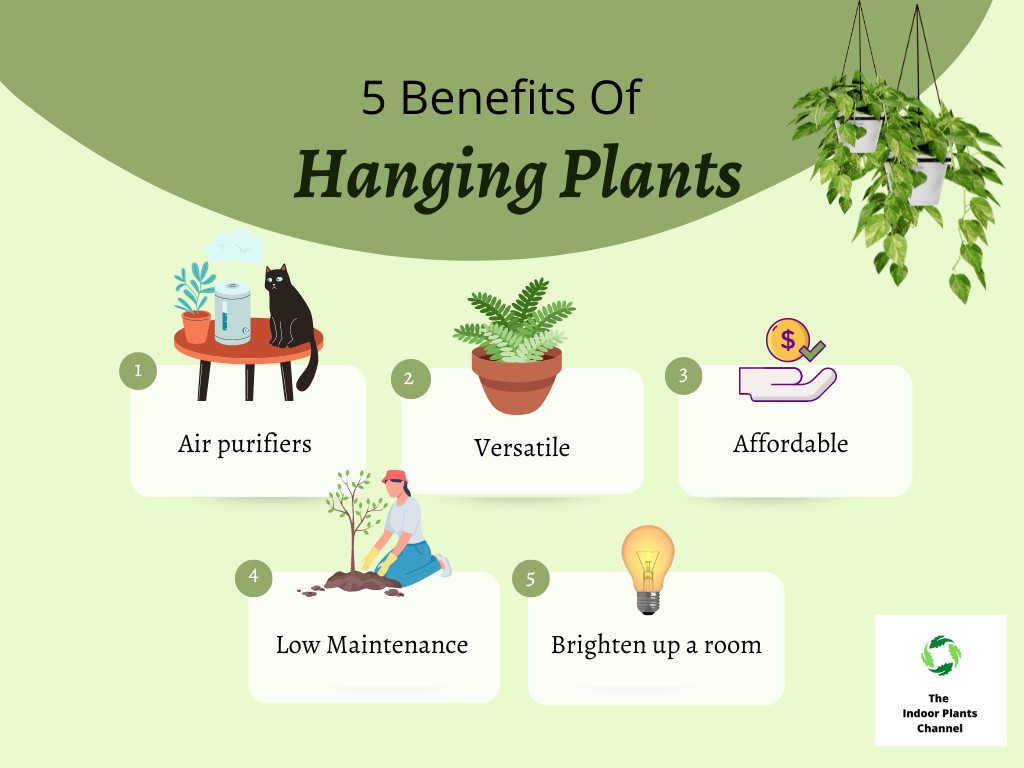
Factors to consider when choosing Hanging Plants
However, there are many hanging plants, so you need a guide for the best one to choose. Here are some factors to consider.
- Make sure it will do well in the type of light you have in your home. Some plants need more light than others, so it’s important to pick one that will thrive in the conditions you can provide.
- Consider how much care the plant will need. Some hanging plants are very low-maintenance, while others require a bit more Tender, Love & Care.
- Third, think about the size of the plant. Some hanging plants can get quite large, so be sure to pick one that will fit in the space you have.
Different Types Of Hanging Plants
There are many different types of hanging plants, each with its own unique benefits. Here are the most popular hanging plants for beginners.
- Spider Plant
- Philodendron
- Pothos
- Boston Fern
- Hoya
- Peace Lily
The spider plant is a classic choice for a hanging plant. It’s easy to care for and does well in a variety of light conditions. Plus, it’s a relatively small plant, so it’s perfect for homes with limited space.
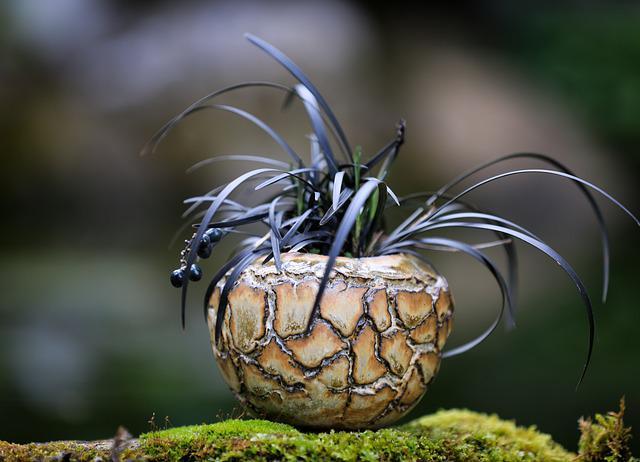
The philodendron is a popular choice for hanging plants because it’s very easy to care for. It prefers bright, indirect light, so it’s a good option for rooms that don’t get a lot of natural light.
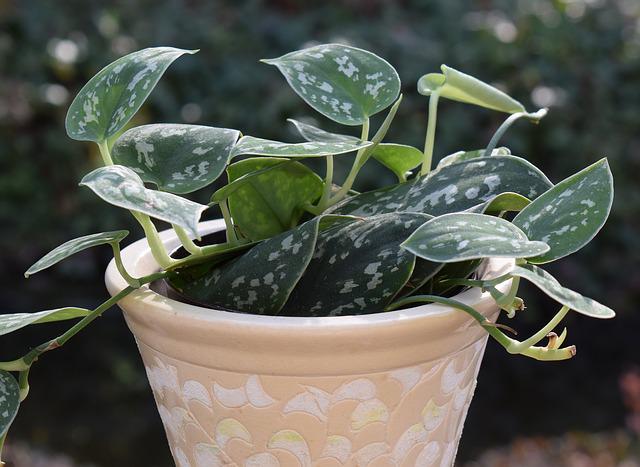
The pothos is another easy-care plant that does well in a variety of light conditions. It’s also called the Devil’s ivy. Pothos a bit heartier than the philodendron, so it’s a good choice if you’re looking for a hanging plant that can tolerate more neglect.
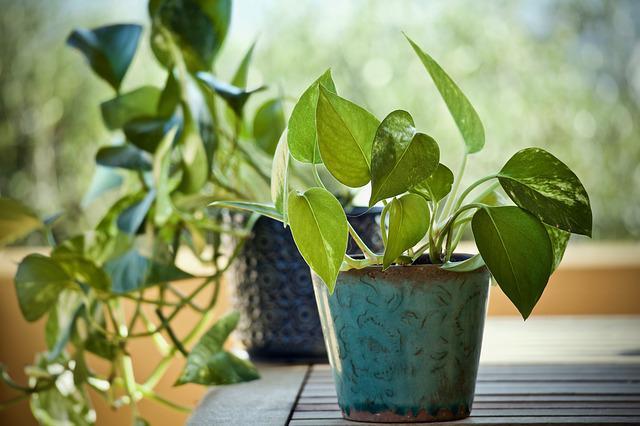
The Boston fern is a beautiful option for a hanging plant. It prefers high humidity and indirect light, so it’s best suited for bathrooms or other damp areas of the home.

Hoya plants are a great choice for beginners because they are very easy to care for. They do best in bright, indirect light and require very little water.
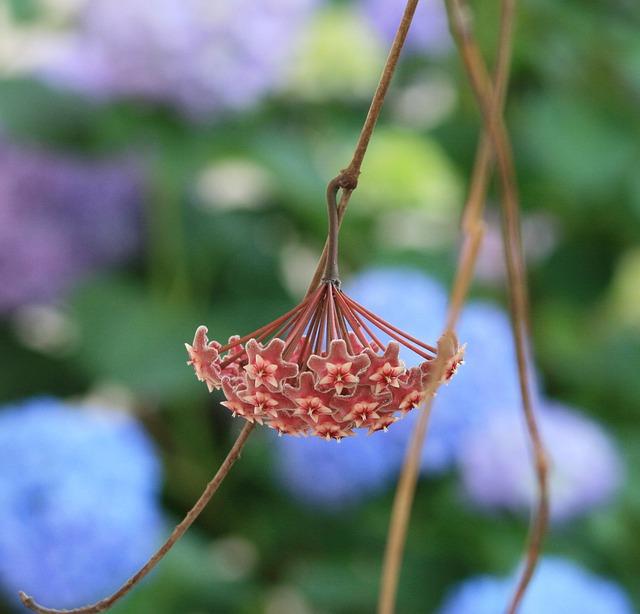
The peace lily is a beautiful plant that is also very easy to care for. It does not need a lot of light or water, and it can tolerate a wide range of temperatures. The peace lily is also known for its ability to purify the air.
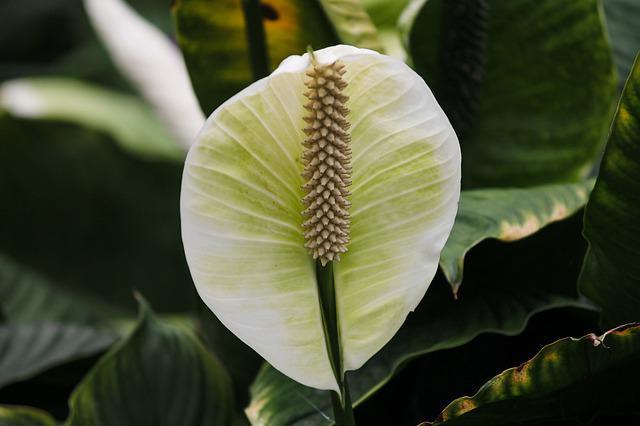
The Best Places To Hang Plants
- On a covered porch
- In a sunroom
- Near a window
- In a greenhouse
- In your home
One of the best places to hang plants is on a covered porch. This is because the porch will protect the plants from the sun and wind. The plants will also be able to get the water they need from the rain.
Another great place to hang plants is in a sunroom. The sunroom will provide the plants with the sunlight they need. It will also be a warm place for the plants to grow.
In fact, you can hang the plants near a window. The window will provide the plants with the sunlight they need. It’s also a warm place for the plants to grow.
A greenhouse is also the best place to hang your plants. It will provide the plants with the sunlight they need and a warm place needed for growth.
You can also hang plants in your home. This is because your home will provide the plants with the sunlight they need. Your home will also be a warm place for the plants to grow.
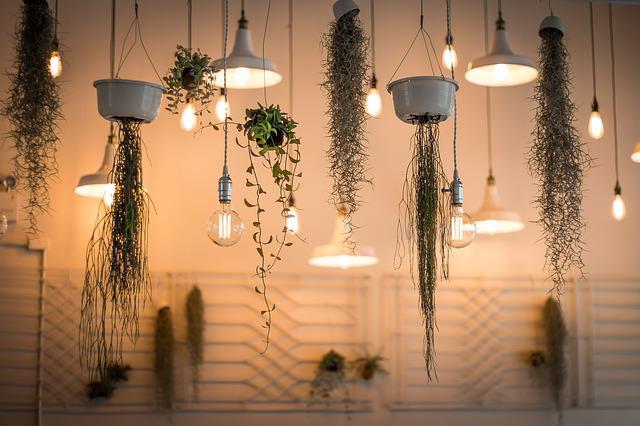
How To Choose The Right Plants For Your Home
When choosing plants for your home, there are a few things to keep in mind.
- Consider the amount of light the plant will need. If you have a south-facing window, your plant will need more light than if you have a north-facing window.
- Consider the size of the plant. A large plant will need more space than a small plant.
- Consider the care the plant will need. Some plants need to be watered more often than others.
- Think about what you want the plant to do. Some plants are for decoration only, while others can help purify the air.
How To Care For Hanging Plants
Hanging plants are a great way to add a touch of nature to your home without taking up too much space. But even though they’re small, hanging plants still need some TLC to stay healthy and thrive.
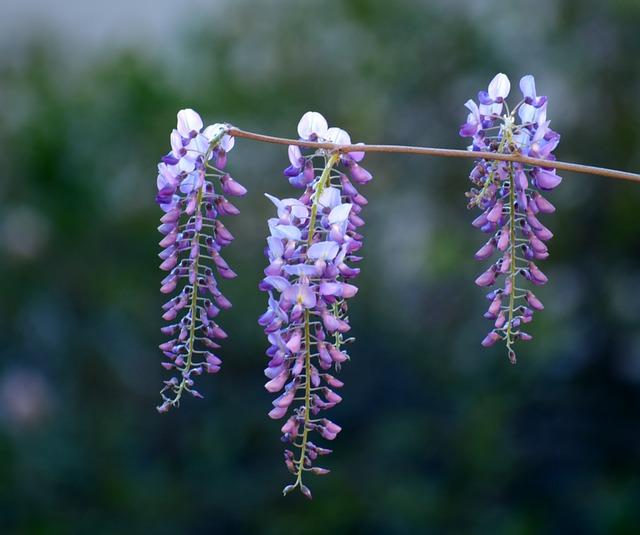
Here are a few tips on how to care for your hanging plants:
- Water them regularly. Just like any other plant, hanging plants need to be watered regularly to stay healthy. Check the soil of your plants every few days to see if they’re dry. If they are, give them a good watering.
- Give them some light. Most hanging plants do best in bright, indirect sunlight. If your plant is getting too much direct sunlight, it may start to wilt.
- Fertilize them occasionally. Fertilizing your plants every few weeks will help them grow and stay healthy. Look for a fertilizer that’s specifically designed for hanging plants.
- Prune them as needed. From time to time, you may need to prune your hanging plants to remove dead or dying leaves. This will also help encourage new growth.
- Monitor for pests. Unfortunately, hanging plants are susceptible to pests like aphids and spider mites. Keep an eye out for any signs of pests, such as leaves that are yellowing or wilting. If you see any pests, treat your plants with an insecticide designed for use on plants.
How To Make Your Own Hanging Plants
What you’ll need:
- A pot or container
- Soil
- A plant (or seeds)
- A hanger (optional)
Instructions:
- Start by picking out a pot or container for your plant. Make sure it has drainage holes at the bottom so the water can drain out.
- Fill the pot with soil, leaving a little bit of space at the top.
- Place your plant in the pot and gently pat down the soil around it.
- If you’re using a hanger, now is the time to attach it to the pot.
- Hang your plant up and enjoy!
Frequently Asked Questions
What are the benefits of hanging plants?
Hanging plants are a great way to add greenery to your home without taking up too much space. They can also help purify the air and improve your indoor air quality.
How do I choose the right hanging plant for my home?
There are a few things to consider when choosing a hanging plant for your home. Think about the amount of light the plant will need, the size of the plant, and it’s maintenance.
How do I care for my hanging plant?
The care requirements for hanging plants vary depending on the type of plant you have. However, there are a few general tips to keep in mind. Water your plant regularly, fertilize when needed and prune your plant.
What are some common problems with hanging plants?
There are a few common problems that can occur with hanging plants. Plants can become overgrown and take up too much space. They become too dry and may need more water and pests infestation is also a problem.
Conclusion
Hanging plants are a good way of having nature in your inner space. They have several benefits that’ll encourage you to get one. However, there are more than enough hanging plants so we’ve narrowed your search to some of the best plants you can get. The article also includes the history and significance of hanging plants. Read through and let us know your thoughts in the comment section.
Michelle Wilde
Related posts
3 Comments
Leave a Reply Cancel reply
![]()
About Michelle Wilde
Michelle Wilde is a stay-at-home mom and avid plant lover. Armed with a post-graduate degree in Computer Science (no kidding!), she loves researching plants and landscapes. When she is not caring for her 4 kids, she spends time on her passion for plants. She blogs at www.indoorplantschannel.com, the trusted source for indoor plants.
Learn more
Subscribe
* You will receive the latest posts and updates about indoor plants!
Search
Recent Posts
Categories
- Beginner Guides (10)
- FAQ (206)
- General (2)
- How-To Guides (212)
- Indoor Plants (214)
- Pest Management (2)
- Plant Problem Solutions (4)
- Seasonal Growing (2)
- Specialized Environments (2)
- Specific Plant Care (3)
- Technical Growing (2)
[…] you’re like me, you love the look of hanging plants. They add a touch of greenery to any room and can really brighten up a space. But if you’re not […]
[…] this article, we’ll be discussing the top five low-maintenance hanging plants that will thrive in your home with minimal effort on your part. Let’s get […]
[…] have a hard time keeping real plants alive. Even if you have a black thumb, you can still enjoy the beauty of hanging plants with the use of fake […]